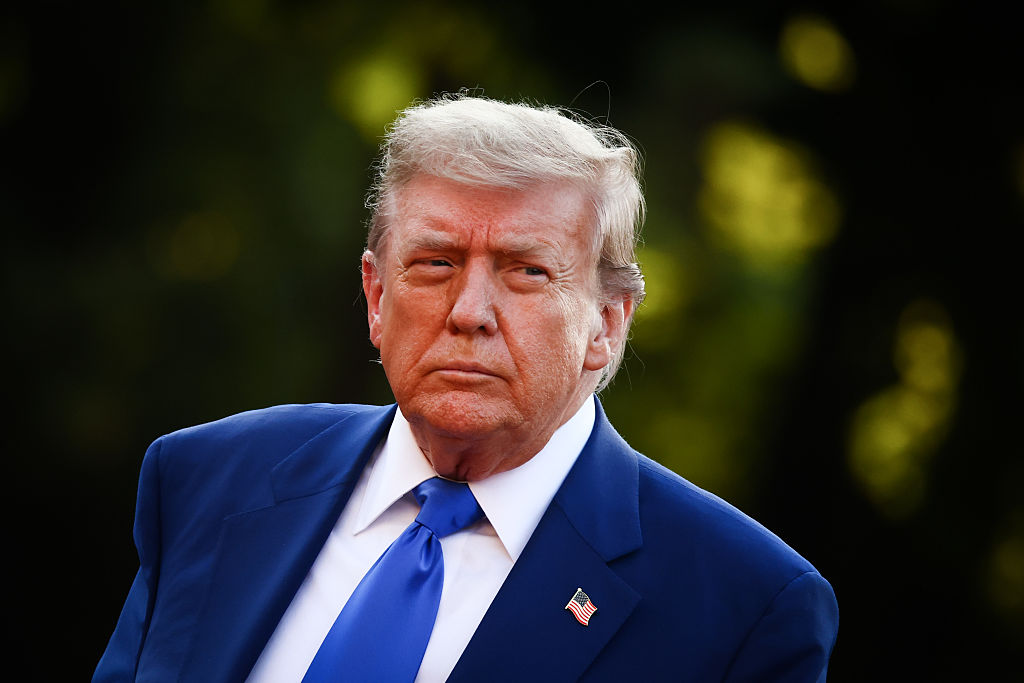Will “Liberation Day” strike again?
Donald Trump’s 90-day tariff pause comes to an end on 9 July. Can we expect further market turmoil?


The 90 days since “Liberation Day” are almost up, and the only trade deals agreed to date are with the UK and China. Will US president Donald Trump reimpose the sweeping tariffs that sent markets into a downward spiral? Trading partners, businesses, households and investors will be hoping the answer to that question is ‘no’.
Comments made by the Trump administration last week suggested an extension was looking increasingly likely, with White House press secretary Karoline Leavitt describing the 9 July deadline as “not critical”.
However, when asked whether he would grant an extension in an interview that aired on Sunday, Trump told Fox News host Maria Bartiromo: “I don’t think I’ll need to… [but] I could, no big deal”. Obscuring his stance even further, the president added: “It’s so simple. We’re sending letters out. I’d rather do it now.”
MoneyWeek
Subscribe to MoneyWeek today and get your first six magazine issues absolutely FREE

Sign up to Money Morning
Don't miss the latest investment and personal finances news, market analysis, plus money-saving tips with our free twice-daily newsletter
Don't miss the latest investment and personal finances news, market analysis, plus money-saving tips with our free twice-daily newsletter
After promising “90 deals in 90 days”, Trump has perhaps been underwhelmed by the progress made with trading partners since April.
A deal between India and the US has been promised for over two months, but reports suggest the two countries are having trouble finalising it. People close to the negotiations told Politico that Trump’s demands to “open up India” have made it difficult for prime minister Narendra Modi’s government to sell the deal to people at home.
Although the Trump administration confirmed a rare-earth deal with China on Friday, 27 June, details also remain scarce. “Silence regarding the terms suggests that there is less substance to the deal than the Trump Administration implies,” said Jeff Moon, former trade official in the Obama administration.
One relative success has been the trade deal with the UK, announced back in May. This will see car and aerospace tariffs cut to 10% and 0% respectively on UK products entering the US. However, the deal kicked in today (30 June) and no further details have been provided on steel and aluminium tariffs. The two countries previously said they would work to reduce these to zero.
Meanwhile, the US and Canada now appear to be working to an extended deadline of 21 July after Ottawa scrapped plans for a digital services tax over the weekend – an attempt to advance talks that had previously stalled.
“It is extremely difficult to predict what the Trump administration is going to announce on tariffs over the next couple of weeks. Although negotiations are underway with multiple countries, the extent to which these can be finalised before 9 July remains very uncertain,” Nicolo Bragazza, associate portfolio manager at Morningstar Wealth, told MoneyWeek.
“Given the high degree of uncertainty, it is unwise for investors to bet on a given outcome as the consequences may be painful if reality does not turn out as expected. Investors need to think ahead and prepare their portfolios for different market scenarios whilst focusing on fundamentals which are more likely to drive returns over the long term.”
What can we expect in markets?
Markets have more than recovered their post-Liberation Day losses over the past three months. The S&P 500 is almost 9% higher than it was at market close on 2 April. If Trump reimposes the original measures, one possible outcome is a drop in equity markets as investors price in some of the same concerns as before – a weaker growth outlook as trade barriers reduce global activity and push up costs for businesses and consumers.
The real question is whether Trump will actually do this given how bond markets reacted last time. His tariff announcements prompted a sharp sell-off in longer-dated US Treasuries, with yields spiking as a result.
Experts have put forward several explanations for the sell-off. Hedge funds and leveraged investors may have been forced to sell liquid assets like US Treasuries to raise cash to meet margin calls. Investors may also have sold up in anticipation of a tariff-related inflation spike – bad news for bonds. Alternatively, investors may have reassessed the stability of US Treasuries in light of Trump’s erratic policymaking and decided the risk-reward profile was no longer attractive.
Whatever the reason, the sell-off seems to have been enough to frighten the Trump administration into submission. When Treasury yields spike, the cost of US government borrowing goes up. The US currently has $36 trillion in debt, and foreign investors hold a significant proportion of this. If they decide to start dumping Treasuries and yields spike as a result, the US has a problem on its hands.
Speaking at the Investment Association’s annual conference this month, BlackRock’s global chief investment strategist Wei Li suggested that “US debt arithmetic” could keep Trump’s actions relatively contained in the lead-up to the 9 July announcement. “The US cannot afford… to push debt servicing costs to uncontrollably high levels without consequences,” Li said. “Sustainable US debt requires foreign funding. Walking away from the foreign market when debt is that high is not really a solution.”
“Trump always chickens out”
In recent months, the phrase “Trump always chickens out” – or TACO – has gained traction among Wall Street traders, who have identified a pattern of dramatic policy statements followed by subsequent U-turns. It is possible we will see something similar this time around – either in the form of another extension or an easing of the initial tariff rates.
“It’s surprising that we have had so few trade deals since the 90-day period began, yet financial markets are currently showing no signs of concern. Investors might simply be wise to Donald Trump’s style of negotiation,” said Dan Coatsworth, investment analyst at AJ Bell.
“The US president likes to push things to the edge and play the game of ‘who blinks first’. He might be hoping that foreign trade officials buckle under the pressure of the imminent timeline and agree to trade terms that are heavily weighted in America’s favour to avoid the worst-case scenario of tariffs reverting back to the ‘Liberation Day’ plan.”
Both Coatsworth and Bragazza point out that any positive news, including an extension of the 9 July deadline, could result in a rally. “Ninety days is not a long time to conduct talks with a large number of countries, and the Trump administration might come out and say negotiations have so far been constructive and need a bit longer to conclude,” Coatsworth said.
The market response could also vary from region to region, depending on the severity of the tariffs and how successful negotiations have been. Trump is unlikely to treat all countries equally and may offer more generous terms to countries with a better relationship with the US. Those with a strained relationship could fare worse. Bragazza highlights the EU as one example, arguing that a “lack of progress on the negotiating front” could result in a “negative market reaction”.
At a press conference on 27 June, European Commission president Ursula von der Leyen said the EU was ready for a deal, but that all options remained on the table. “We are preparing for the possibility that no satisfactory agreement is reached… and we will defend the European interest as needed,” she added. Reports suggest Brussels is resigned to the fact that a 10% baseline tariff is likely to remain. Some level of tariff on automobiles, steel and aluminium is also expected to stay.
Get the latest financial news, insights and expert analysis from our award-winning MoneyWeek team, to help you understand what really matters when it comes to your finances.
Katie has a background in investment writing and is interested in everything to do with personal finance, politics, and investing. She previously worked at MoneyWeek and Invesco.
-
 Where did house prices rise and fall the most in 2025?
Where did house prices rise and fall the most in 2025?Some parts of the UK have seen yearly property price growth of up to 12.6%, but others have seen values fall by as much as 8.9%, research shows.
-
 ‘Why I have ditched my Help to Buy ISA for cash savings and the stock market’
‘Why I have ditched my Help to Buy ISA for cash savings and the stock market’Without the 25% bonus, my Help to Buy ISA is effectively redundant, says MoneyWeek writer Sam Walker.
